
Curated with aloha by
Ted Mooney, P.E. RET

The authoritative public forum
for Metal Finishing 1989-2025

-----
Pulse anodizing
Please see also --
• Topic 0208 "Interference coloring of aluminum by pulse anodizing"
• Topic 1611 "Hardcoating using Pulse Rectifier"
Q. Hi everyone. Currently we are using a pulse rectifier for type 2 and 3 anodize. The controller is equipped with multiple options. Manual, auto, pulse, mdc, time off, time on, ramp rate. So I believe my time off and on is in milliseconds adjusted with my base output. The questions I have is we manually ramp with the ramp rate set at zero. If I was to use the ramp rate would I switch to auto and what would I adjust the ramp rate to. Also there is an ACD pod can someone explain that.?
Steven Hernandez- Phoenix arizona
March 13, 2021
⇩ Related postings, oldest first ⇩
for Shops, Specifiers & Engineers

avail from eBay, AbeBooks, or Amazon
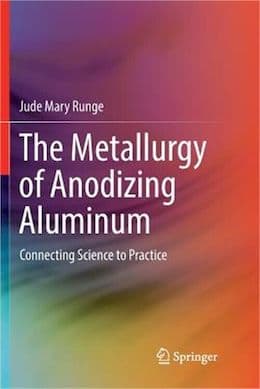
avail from eBay, AbeBooks, or Amazon
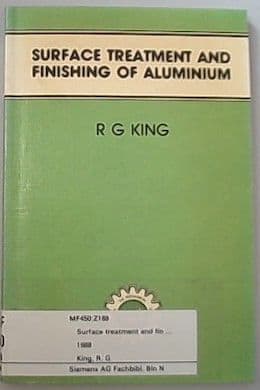
avail from eBay, AbeBooks, or Amazon
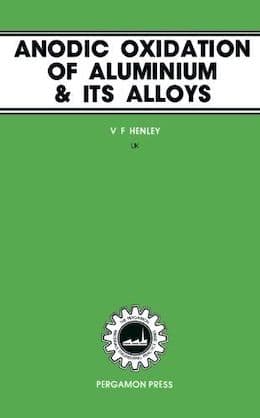
avail from eBay, AbeBooks, or Amazon
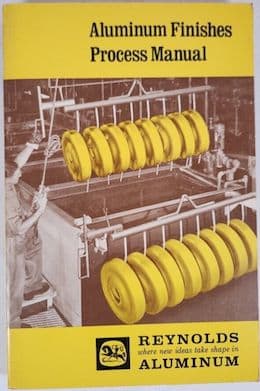
avail from eBay, AbeBooks or Amazon
(as an Amazon Associate & eBay Partner, we earn from qualifying purchases)
Q. We are installing an anodizing line. Rather than using conventional rectifier, we are considering using pulse rectifier. Anybody with such technical knowledge is welcome to comment on the pros & cons of such process.
Lim Chauselectroplating - Singapore
2004
A. Hello, Lim. Pulse plating is of value in some instances. So I can easily picture that pulse anodizing can be of value, through micro-agitation of the boundary layer if by no other means -- although I have no personal experience with it, and some concern about what it can mess up :-)
Pulsing adds another variable to a process which can already be difficult to manage because of many variables. If your shop has substantial anodizing experience, and your process is under good control, by all means go for it!
But if you have limited anodizing experience, or you presently suffer consistency problems, I say avoid adding another tricky variable that many highly experienced shops have been able to do without.

Ted Mooney, P.E.
Striving to live Aloha
finishing.com - Pine Beach, New Jersey
A. Dear Lim Chaus
Are you still interested in hearing about pulse anodising? Are you intending to pulse anodise MIL-A-8625 / MIL-PRF-8625
[⇦ this spec on DLA] type II or type III?
I did my Ph.D thesis on Pulse Anodizing.
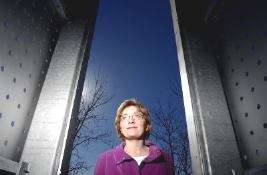
Anne Deacon Juhl
- - Trustrup Denmark
Q. I would like Ms. Anne to give detailed instructions as to how AC current is to be superimposed on Rectified DC output for Anodizing using AC superimposed on DC. A circuit diagram would be most useful as I would like to modify my Rectifier unit. Thanks
Dilip Patel-Gujarat, India
2005
![]() Hi, Dilip. Welcome to finishing.com!
Hi, Dilip. Welcome to finishing.com!
Here's a link to Dr. Juhl's terrific paper, "Theoretical Introduction to Pulse Anodizing." This forum introduces finishers to concepts like what is pulse anodizing about, pointing out papers about it, showing you who are the experts in this field, what manufacturers offer pulsed power supplies, what is new in this field of study, etc. And it's also good for quick answers to specific questions, and as an aid for troubleshooting shop problems.
But consultants and suppliers earn their living guiding people through the implementation of such technologies. I doubt that anyone will guide you through such fine detail as you are requesting as a freebie, but your inquiry remains here if I'm wrong :-)
Good luck and Regards,

Ted Mooney, P.E.
Striving to live Aloha
finishing.com - Pine Beach, New Jersey
Multiple threads merged: please forgive chronology errors and repetition 🙂
Q. I would like to know more about pulse anodising.Can anyone suggest a book, web site or any other material? I am interested in setting up a plant to anodise aluminium using this process(I have a plant which anodizes through the conventional rectifier). Also let me know about hard anodising through pulse rectifier. Let me know about the types and capacity of pulse rectifiers in details.
Our plant is expanding and my boss (the owner) has asked me to go through the various technologies related to pulse anodising as he is interested in installing such a plant.
Abhijit Datta- CALCUTTA, India
2002
Q. Please send me the name of book for hard anodising.
Sandip Thakorbhai Bhandari- Bilimora, Gujarat, India
2004
Q. Please send some technical detail of pulse anodising how it is cheaper or economical than normal or conventional dimmer type rectifier. Also suggest some book on pulse anodising.
Sudershan Gupta- Delhi, India
2005
A. Hi, Abhijit, Sandip, Sudershan.
The most complete book on anodizing is Surface Finishing and Treatment of Aluminum and its Alloys, by Wernick, Pinner & Sheasby. It has a few references to pulse anodizing.
Regards,

Ted Mooney, P.E.
Striving to live Aloha
finishing.com - Pine Beach, New Jersey
A. Hi
I have made a Ph.D thesis about Pulse Anodizing.
Sunny regards,

Anne Deacon Juhl
- - Trustrup Denmark
March 19, 2009
Pulse rectifier for anodizing
Q. Is there anyone that uses a pulse rectifier for anodizing? Is there really an advantage such as shorter time anodizing and electric energy savings?
Alaattin tuna- sakarya, Turkey
September 18, 2015
A. I am currently anodizing type II and type III. Pulse rectifiers are excellent for precision work because I need a tolerance of ± 3 microns in nominal thickness of 75 microns, also consume only 20% energy than conventional rectifiers.
They are also cheaper.
The disadvantages are the lifetime and repairs.
I highly recommend them.
Q. How I can contact Anne Deacon Juhl?
Thanks.
- Guadalajara, Jalisco, México.
January 20, 2016
![]() Hi Victor. Thanks for the great input. But I have a hard time believing, in view of Faraday's Law, that conventional anodizing rectifiers are only 20% as efficient as pulse plating rectifiers, although I'd be interested in hearing more about that and an explanation.
Hi Victor. Thanks for the great input. But I have a hard time believing, in view of Faraday's Law, that conventional anodizing rectifiers are only 20% as efficient as pulse plating rectifiers, although I'd be interested in hearing more about that and an explanation.
Anne was a supporting advertiser of finishing.com with direct live links to all her contact info for a while; but she dropped out so we no longer have current info about how to contact her; if google doesn't work you might see if IHAA can help you find her.
Regards,

Ted Mooney, P.E.
Striving to live Aloha
finishing.com - Pine Beach, New Jersey
Switch-mode Rectifiers for Anodizing
Q. I have been tasked to order new rectifiers to replace our old ones due to corrosion. I have been asked to look into Switch-Mode Pulse Rectifiers instead of replacing them with the same SCR Rectifiers we are currently using. When I called the company to question them, they asked me what my switching parameters were.. I have several questions on this. What are the pros/cons of making this switch, and how do I choose what size/type/parameters of Switch-Mode Rectifier to order?
Thank You
Anodizing Line Technician - Thomasville, North Carolina, USA
May 4, 2016
A. Hi Danny. You may already realize this, but other readers may not, and so that the discussion doesn't confuse them it should be noted that "switch-mode" and "pulse anodizing" are neither mutually inclusive or exclusive -- and in fact they have little to do with each other :-)
A rectifier always involves a transformer to convert the 115 V or 230 V or 460 Volt line voltage down to the lower voltages needed for plating or anodizing. In the old days, those transformers naturally operated at the 60 Hz frequency of the incoming alternating current. But then at the dawn of the personal computer age, designers realized that the size of transformers could be greatly reduced if they could operate at a much higher frequency. So they designed "chopper" circuits to rapidly turn the power off and back on, simulating a frequency much higher than 60 Hz, and allowing much smaller transformers. Although this development took a number of years to work itself up to the much larger 3-phase power supplies used for plating and anodizing, it eventually did. In this industry those much smaller rectifiers are often called "switch-mode" or "switching" rectifiers. So, as far as the 'switch-mode' aspect is concerned, you can probably just read the nameplates on your old rectifiers and tell the supplier that you want switch-mode rectifiers with the same DC Amperage and DC Voltage output as your old rectifiers.
But the other aspect you inquire about is "pulse anodizing". Not everybody uses it, but what it means is that the rectifier does not put out pure DC current for anodizing, but instead delivers some sort of on-off cycling of the power in the belief that the anodizing will proceed better. If the power supply manufacturer does not have suggestions on that, you would need to inquire of other users or of a consultant regarding what cycles are most useful for anodizing.
Whether you use switch-mode rectifiers or not, another thing that newbies need to know is that bare aluminum is highly conductive and anodized aluminum is not, with the result that anodizing always starts at low voltage to avoid burning the aluminum, and as the resistive anodized films build up, the rectifier must slowly ramp up to higher voltage to keep the process going. So anodizing rectifiers must be capable of "ramp control".
Regards,

Ted Mooney, P.E. RET
Striving to live Aloha
finishing.com - Pine Beach, New Jersey
Q, A, or Comment on THIS thread -or- Start a NEW Thread
